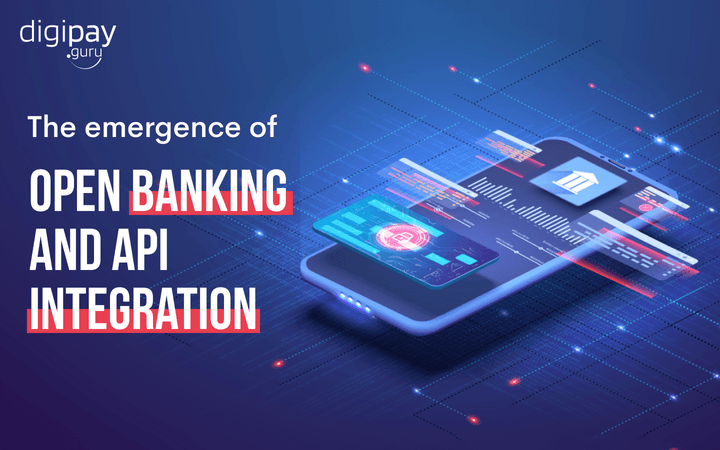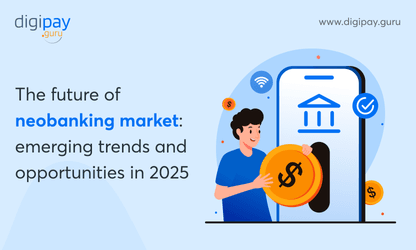The financial industry has undergone significant changes in recent years, driven by technological advancements and changing consumer expectations. One of the most notable developments is the emergence of open banking and API integration.

Open banking refers to a system in which financial institutions are required to provide access to their customers' account data to authorized third-party providers. According to a study by Open Banking UK, it was found that as of March 2022, open banking usage surged to 21.1 million transactions, as compared to 6.1 million in 2021 showing a monthly growth rate of around 10%.
API integration, on the other hand, enables secure communication and data sharing between financial institutions and third-party providers through the use of Application Programming Interfaces (APIs).
According to a Statista reveals that the number of open banking API calls is projected to rise from 102 billion in 2023 to 580 billion by 2027. Also, the open banking transactional value is expected to grow to $ 330 billion by 2072.
Together, the open banking platform and API integration have become the backbone of the financial services industry and are set to continue driving innovation in the fintech sector.
The underlying principle of open banking, a dynamic and transformative innovation in the financial sector, is rooted in the European Union's Payment Services Directive (PSD2).
This directive, which was made into effect in January 2018, mandates banks to give access to customers' account data to third-party providers, contingent upon the customer's absolute consent.
The explicit aim of this revolutionary initiative is to promote competition and drive innovation in the financial services industry, while simultaneously boosting the overall customer experience.
The emergence of open banking and API integration has been further accelerated by the COVID-19 pandemic, which has highlighted the need for digital fintech solutions in the financial industry.
This blog post aims to explore the concept of open banking and API integration in more detail, including their key features, benefits, and challenges. We will also examine real-world examples of open banking and API integration in action, and consider future developments and predictions.
What is Open Banking?
Open banking refers to a system in which financial institutions are needed to give access to their customers' account data to authorized third-party providers. This allows developing the new financial products and services that can be accessed using Application Programming Interfaces( APIs).
The key features of open banking include the ability for customers to share their financial data with third-party providers, such as fintech companies and financial aggregators. This enables customers to access a wide range of financial products and services, such as budgeting tools, investment platforms, and lending services, all in one place.
Additionally, open banking allows for the development of new financial products and services that can be accessed through the use of APIs.
Open banking ecosystems differ from traditional banking systems in that it allows for greater competition and innovation in the financial industry. It also has the potential to enhance the customer experience by providing customers with more control over their financial data and giving them access to a wider range of financial products and services.
APIs usage is essential for open banking as it enables secure data sharing between financial institutions and third-party providers. APIs act as a gateway for third-party providers to get access to customers' financial data, which allows them to develop new products and services.
This facilitates financial institutions to deliver new and innovative services to their customers, while also providing third-party providers with access to a broader customer base. Long story short, open banking is transforming the payment landscape drastically, making it a need of the hour.
Read more: How open banking is changing the global payment landscape
What are APIs and their role in Open Banking?
Application Programming Interfaces (APIs) are a set of protocols, routines, and tools that enable communication and data sharing between different systems. In the context of open banking, APIs are used to allow third-party providers to access customers' financial data, enabling them to develop new products and services that can be accessed by customers.
There are different types of APIs in open banking that can be used in open banking, such as;
- Account information services (AIS)
- Payment initiation services (PIS)
- Confirmation of funds (CoF) APIs
AIS APIs allow third-party providers to access customers' account information, such as account balances and transaction history.
PIS APIs enable third-party providers to initiate payments on behalf of customers. CoF APIs allow third-party providers to confirm the availability of funds in a customer's account before initiating a payment.
APIs in open banking play a crucial role in enabling secure data sharing between financial institutions and third-party providers like fintech and digital payment solution providers. By using APIs, financial institutions can control access to their customers' data, ensuring that only authorized third-party providers have access.
Apart from that, APIs and their innovative new products are giving rise to more and more new businesses and startups in the field. This makes API crucial to both the fintech and the banking sectors all over the world.
Benefits of Open Banking and API Integration
Open banking and API integration have the potential to bring a wide range of benefits to the financial industry, including:

Improved customer experience and convenience
Banking is transforming the customer experience and open banking is making it more significant by allowing customers to access a wider range of financial products and services through a single platform, making it easier for them to manage their finances.
Additionally, the use of APIs enables the development of innovative new products and services that can be accessed through mobile banking solutions and online platforms, making it more convenient for customers to access their financial data and manage their accounts.
Read more: How are Banks transforming the customer experience
Increased competition and innovation
Open banking promotes competition by allowing third-party providers to access customers' financial data, which enables them to develop new products and services that can be accessed by customers. This can lead to an increase in innovation, as financial institutions and third-party providers compete to offer the best products and services.
Enhanced security and data protection
Open banking and API integration use various security measures, such as authentication and encryption, to provide top-notch payment security for customers' financial data from unauthorized access. This can help to reduce the risk of fraud and security breaches and provide customers with greater peace of mind.
Read more: How to protect the payment security for customers
Cost savings for banks and financial institutions
Open banking and API integration can help to reduce costs for banks and financial institutions by automating processes and reducing the need for manual intervention. Additionally, it allows third-party providers access to customer data, thus reducing the investment cost for banks in developing new products and services.
Challenges and Risks
Despite the potential benefits of open banking and API integration, there are also some challenges and risks that need to be considered. These include:
Regulatory compliance
Open banking and API integration are subject to a wide range of regulations, which can vary between countries and regions. Ensuring compliance with these regulations can be a complex and time-consuming process, and non-compliance can result in significant fines and penalties.
Data security and privacy concerns
One of the key challenges of open banking and API integration is ensuring the security and privacy of customers' financial data. This includes protecting data from unauthorized access, as well as ensuring that data is processed and stored following relevant regulations and guidelines.
Integration with existing systems
Open banking and API integration rely on the use of APIs, which need to be standardized to ensure interoperability between different systems. However, standardization can be a challenging process, particularly in an industry as complex as finance.
Standardization of APIs
Open banking and API integration rely on the use of APIs, which need to be standardized in order to ensure interoperability between different systems. However, standardization can be a challenging process, particularly in an industry as complex as finance.
Case studies and Examples
Open banking and API integration are relatively new concepts, but they are already being implemented in various forms around the world. Some use cases for open banking APIs examples include
European Union (EU)
In the EU, the Payment Services Directive (PSD2) has been in effect since January 2018, requiring banks to provide third-party providers with access to customers' account data.
This has led to the development of a wide range of new financial products and services, such as budgeting tools, investment platforms, and lending services, that can be accessed through a single platform.
The United Kingdom
The Open Banking Implementation Entity (OBIE) was set up in the UK to promote the development of open banking and to ensure compliance with the PSD2.
The OBIE has developed a set of APIs that are available for use by third-party providers and has also established a certification scheme to ensure the security and reliability of third-party providers.
Australia
The Australian Competition and Consumer Commission (ACCC) has established the Consumer Data Right (CDR), which allows customers to share their financial data with third-party providers.
This has led to the development of new financial products and services, such as price comparison websites, that can be accessed through a single platform.
Singapore
The Monetary Authority of Singapore (MAS) has established the Financial Data Exchange (FDX), which allows customers to share their financial data with third-party providers. This has led to the development of new financial products and services, such as financial planning and advice, that can be accessed through a single platform.
These are just a few examples of how open banking and API integration are being implemented around the world. They demonstrate the potential of these concepts to revolutionize the way we interact with and use financial services, and to promote competition and innovation in the financial industry.
Future of Open Banking and API Integration
Open banking and API integration have already transformed the banking industry by providing customers with greater control over their finances and enabling them to access a wide range of financial services. However, the future of these technologies looks even more promising, with many opportunities for growth and innovation.
One of the main drivers of the future of open banking and API integration is the increasing use of emerging technologies such as artificial intelligence (AI) and blockchain. These technologies can be used to enhance the security, speed, and accuracy of transactions, and to enable the creation of new products and services.
Moreover, open banking and API integration will continue to drive innovation and competition in the financial industry. Fintech startups and established banks alike will have the opportunity to leverage open APIs to create new and innovative financial products and services that meet the evolving needs of their customers.
Conclusion
In conclusion, open banking, and API integration represent a new era of innovation and convenience for the financial industry.
While open banking and API integration has the potential to change the way we interact with financial services and make them more convenient, secure, and efficient for customers, it is important to be aware of the challenges and risks involved and take appropriate measures to mitigate them.
Thus, the future of open banking and API integration is still unfolding, but they will play a significant role in shaping the financial industry in the years to come.
So if you are looking for a digital fintech software solution with powerful and secured API integrations for your business, DigiPay.Guru can help!




